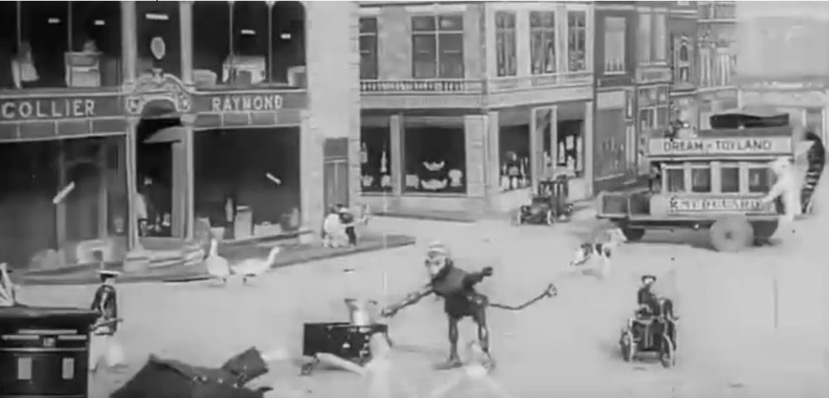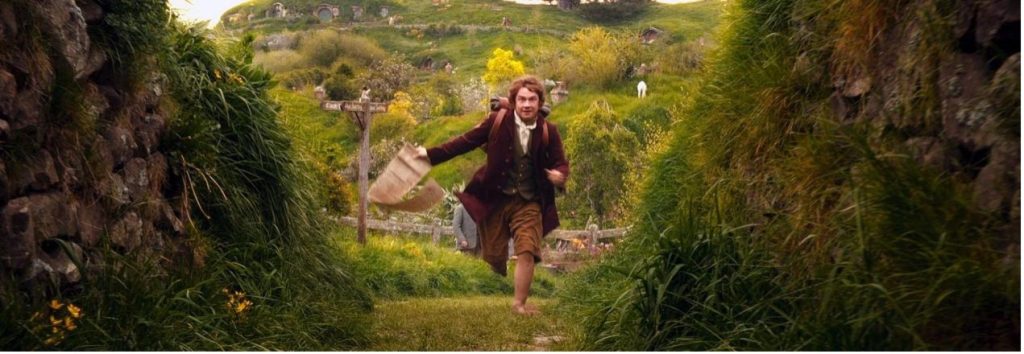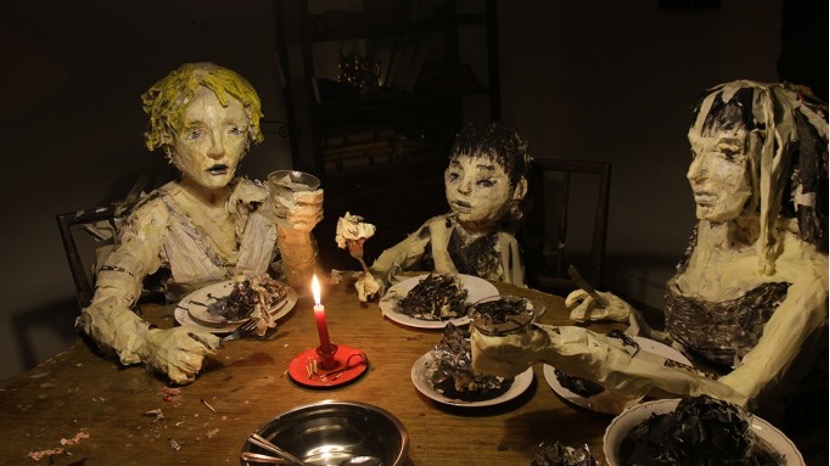Compared to the fluent visual effect of nowadays stop-motion animations with a high frame rate like LAIKA studio’s ones, most of the stop-motion animations from early times shared a much lower frame rate. Stop-motion animators seem to treat the low frame rate effect as a fault and try so hard to achieve the fluent effect. But is the low frame rate of stop-motion animation really a fault?
If we look at stop-motion animation against other media forms, it seems that it was born with a sin: a low frame rate. Three-dimensional animation can automatically fill out the in betweens with the help of software like Maya, and most two-dimensional animations are basically maintained at a frame rate of at least 12 frames per second. However, due to the really demanding workload of shooting pictures and adjusting puppets in stop motion animation, they seem to have only 6 to 8 frames per second, which is lower than other image formats. Because of this situation, today’s stop-motion animators are trying their best to avoid making their work look lagging. Travis Knight, CEO of LAIKA Studio, once strengthened the importance of raising the frame rate to create a more smooth effect as one of the strategies to bring back the spectators that this typology of animation has lost in recent times: “When we started Laika 10 years ago, we could see the writing on the wall. Stop-motion animation was basically taking its last, dying breath. We had to come up with a way, if we wanted to continue to make a living in this medium that we loved, to bring it into a new era, to invigorate it.” The animation industry has also embraced this smooth effect: “LAIKA’s version of stop-motion is particularly striking because its characters and backdrops are rendered in such detail, and move so smoothly, that its films could be mistaken for wholly CGI creations, instead of stop-motion with digital assistance.” [i] Thus, influenced by the practice of stop-motion animation industry’s leaders, nowadays stop-motion animations are becoming more and more smooth in terms of their frame rates. However, I disagree with Knight’s statement about the “dying breath” of the traditional stop-motion animation. Traditional low frame rate stop-motion animation has its own unique charm because it could not only confer a handmade uncanny horror effect to the puppet but also build the “fourth wall” between the audience and the image, creating a dramatic distancing effect for the story. I believe that what a stop-motion animator needs to do is to discover its uniqueness and then enlarge it, instead of trying to avoid it.
First of all, the visual stuttering effect created by the low frame rate can generate a certain kind of uncanny effect of the puppet, making the latter’s facial and body performance acting more stiffly (sort of between human and non-human). This kind of stiff uncanny effect could thus bring horror emotions to the film. This is a bit similar to the technique often used in many horror movies based on wooden puppets, that is, the puppets crunch and stiffly move their bodies, terrifying the audience. Perhaps the reason why so many early stop-motion animations addressed horror themes is precisely that the rigid dynamics of the dolls naturally have a horror effect. The rigid dynamics will strengthen the difference between dolls and humans to produce a certain uncanny valley.
Secondly, the stuttering effect produced by the low frame rate can bring a sense of alienation. In other words, it always reminds the audience that what they are seeing is an animation, it is something imaginary. A high frame rate could instead generate a comparatively clear, sharp, and smooth visual effect, which may give the audience a closer perception of the real world, since most moving objects in the real world are filled with clear coherence without any motion blur effects. Peter Jackson, who won an Oscar for his well-known film series The Lord of the Rings (2001-2003), once said that he wanted to increase the frame rate from 24fps to 48fps or 64 fps in The Hobbit (2012) to let the audience see more details in the image and let them immerse into the fantastic world he built up more easily without thinking: “It’s like watching a movie where the flicker and the strobing and the motion blur what we’ve been used to seeing all of our lives—I mean, all our lives in the cinema—suddenly that just disappears…And you’ve got this incredibly vivid, realistic-looking image. You’ve got sharpness because there’s no motion blur.”[i] This is also true with the latest film of Ann Lee, who is also another director experimenting with the high frame rate film nowadays in his latest movies Gemini Man (2019) and Billy Lynn’s Long Halftime Walk (2016). Both Lee and Jackson want to use a high frame rate to arise a similar perception between the real world and the image world of the audience to let them better immerse and sympathize.
Compared to those high frame rate animations and videos, stop-motion animation with stuttering visual effects prevent the audience from being completely immersed in it. In other words, sometimes it pulls away the audience and at other times it immerses it, which makes the stop-motion animation have a certain allegorical attribute. We all know that the fable does not happen in reality. It exists in a remote place, and there is a certain distance from us. Therefore, stop-motion animation is particularly suitable to tell fables, because this kind of story form requires the audience to maintain a certain distance. It makes spectators realize that this is a fictional world, that it is “just” an animation. They will not really be substituting all the emotions and immersing in it, so we can have more space to reflect and examine.
In sum, I hope that the stuttering effect of stop-motion animation caused by low frame rate can be brought back in the future. In my view, it would not be a technical laziness, but a return to the aesthetics of stop-motion animation. Indeed, I believe that, if stop-motion animation is as smooth as 3D one – like what LAIKA studio does –, in the future more and more viewers will give up thinking and become dolls kidnapped by cheap emotions.
Shengwei Zhou is an award-winning animator, director, and screenwriter. He got his bachelor’s and master’s degrees at School of Art, Peking University in Beijing. Now, he continues his MFA study in Animation and Digital Arts program at University of Southern California. His feature animation SHe won over 50 awards and selections in film festivals around the world including 21st Shanghai International Film Festival Best Animation Nomination, 2019 Animation Is Film Festival Official Selection, and 23rd Fantasia International Film Festival Official Selection.
[i]https://www.theverge.com/2016/8/18/12500814/laika-studios-behind-the-scenes-kubo-
and-the-two-strings-video
[ii]https://www.theringer.com/movies/2019/10/15/20915467/ang-lee-gemini-man-will-smith-high-frame-rate-billy-lynns-long-halftime-walk
[iii]https://www.hollywoodreporter.com/movies/movie-reviews/wolf-house-review-1167762/




1 comment for “Should the Low Frame Rate of Stop-motion Animation Be Regarded as a Defect?”